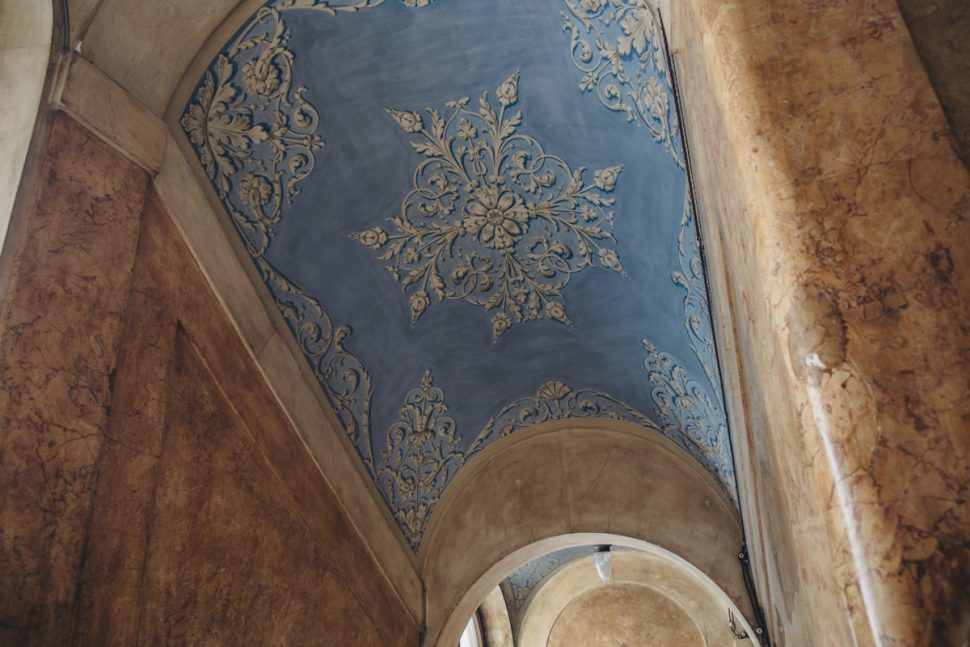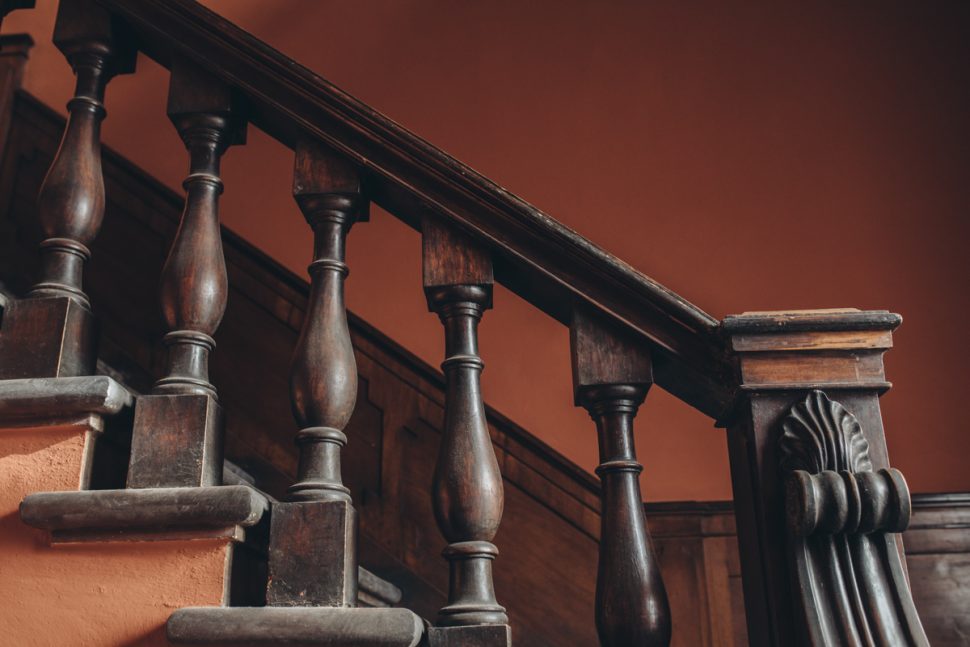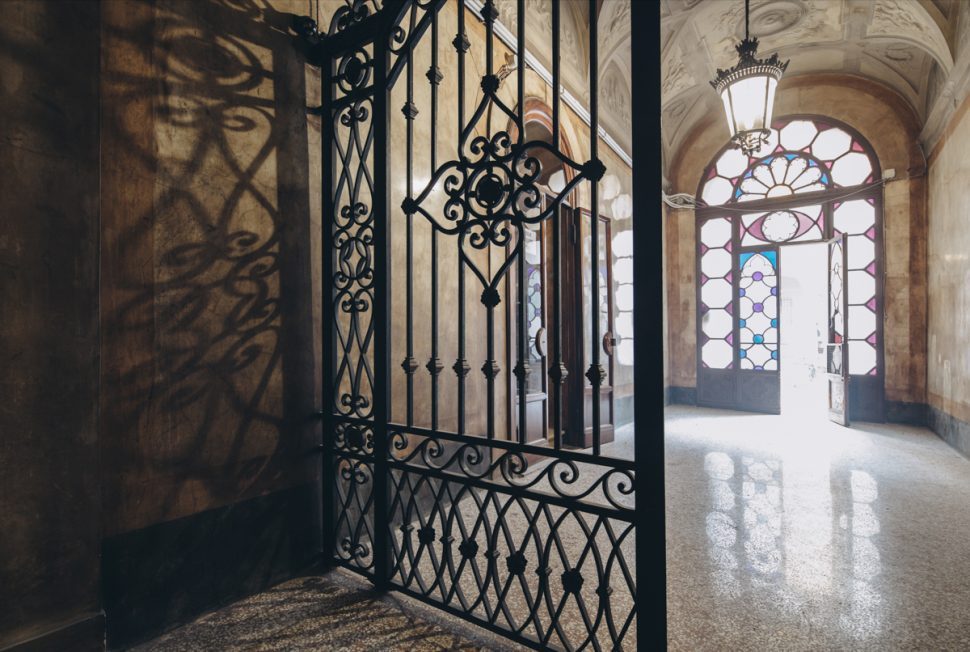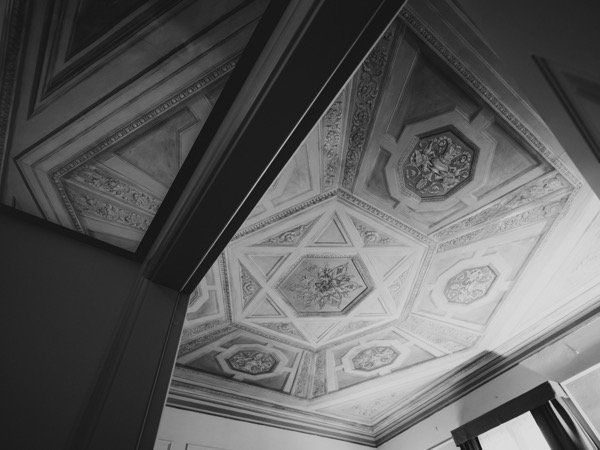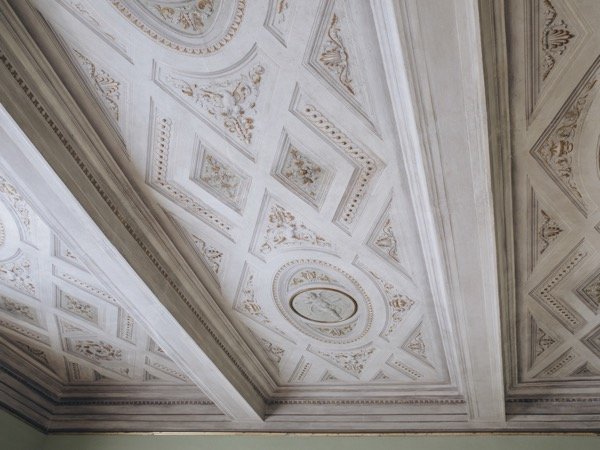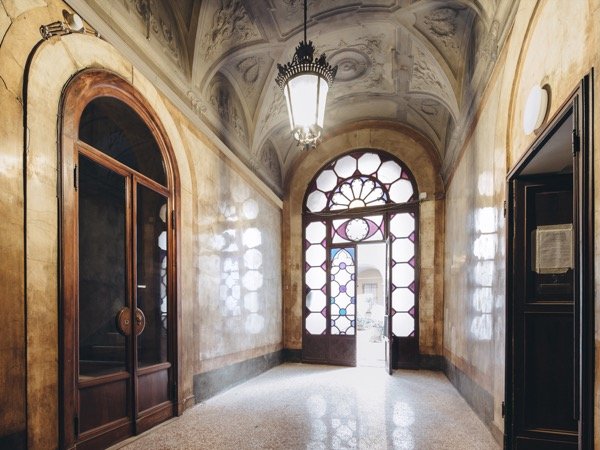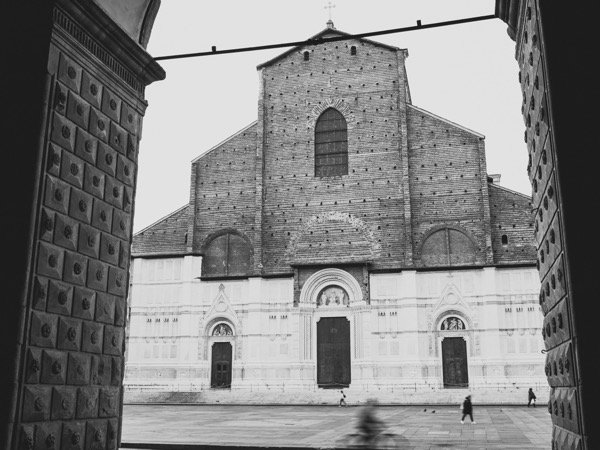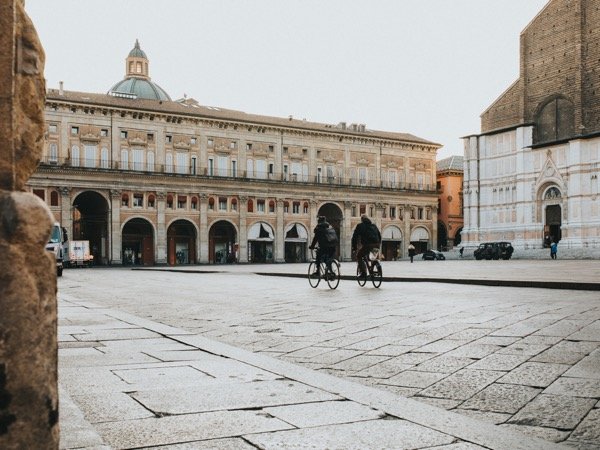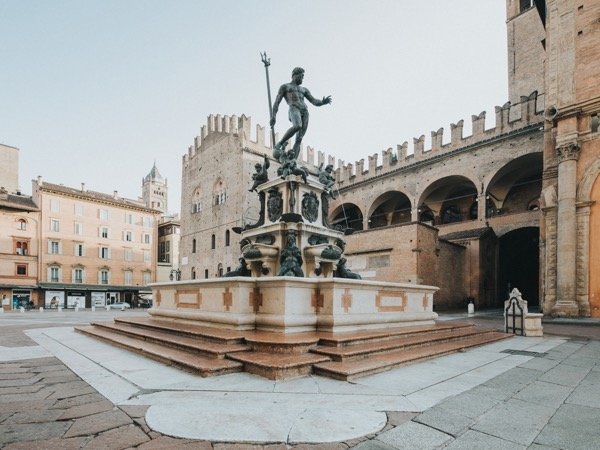200 YEARS OF HISTORY AND MORE
The Palazzo Gregorini Bingham dates back to two centuries ago, in fact it existed as early as the 1700s, later, in 1785, it was given the structure that is still visible today by the Pattuzzi family, who had the façade constructed according to the drawing prepared by the Romagnolo architect Camillo Morigia. After several owners, in 1825 it was bought by Adelaide Gregorini who in 1826 with her husband Riccardo Bingham, count of Lucan and Pari of England restored many areas.
At the end of these works they proceeded to the decoration of the ceilings, still in progress in 1830, alternating “schematic ornamental motifs and elaborate figurative compositions.” (Ref A.M.Matteucci, the decorators of Bolognese formation between seven hundred and eight hundred from Mauro Tesi to Antonio Basoli , pp.349-351, Fondazione Cassa di Risparmio di Bologna).
The beauty of the decorative apparatus is similar to another large building, Palazzo Merendoni in via Galliera, for the skill and richness of the decorations made by a great team of Bolognese quadraturists and figurines such as Luigi Cini, Pietro Fancelli, Onofrio Zanotti, who were very active in those years.
The suites on the top floor show the intervention of these teams in different years, as the historical information testifies, since the last room that presents a decoration in the shape of a Hebrew cross with a hexagonal frame has certainly been done during the first restructuring carried out in the last years of the nineteenth century due to the diversity of chromatic impasto and executive voluptuousness.
While the suites with geometrical decorations and squares and green and pink earth colors range present a stylistic diversity more similar to the full nineteenth-century taste with geometries and squares that leave little space for large depictions typical of previous centuries. It is important to note the importance of the suite with a green earth colors which present the abundant use of wooden frames in gold leaf that frame the cupids on the ceiling and the abundant use of gold brush strokes to give touches of light and preciousness across the ceiling.
The entrance hall to the floors were made with the ancient technique of the wax-polished marmorino. This technique, much in vogue from the seventeenth century, was used to give importance and prestige to hallways, stairways and churches when they could not use marble slabs.
It was carried out by specialized teams who were highly sought after for their mastery and execution complexity. The entrance hall presents a beautiful example of marble decoration surmounted by a fine vaulted decoration. Proceeding to the suites you always notice the use of the marble technique to accompany visitors to the upper floors and other ceiling decorations.

